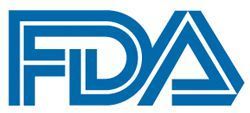FDA Extends PDUFA Date for BLA of Omidubicel in Blood Cancers Requiring Transplant
The FDA has extended the Prescription Drug User Fee Act goal date to May 1, 2023, for the biologics license application seeking the approval of omidubicel for patients with blood cancers in need of allogenic hematopoietic stem cell transplant.
FDA

The FDA has extended the Prescription Drug User Fee Act (PDUFA) goal date to May 1, 2023, for the biologics license application (BLA) seeking the approval of omidubicel for patients with blood cancers in need of allogenic hematopoietic stem cell transplant (HSCT).1
The FDA issued an information request to Gamida Cell Ltd. and viewed the data in the response as a major amendment to the BLA. The original PDUFA date was January 20, 2023.
The regulatory agency requested laboratory results from intermediate time points for patients enrolled in a phase 3 trial (NCT02730299). The additional data provided by Gamida Cell to the FDA were consistent with prior data submissions, according to the company.
The BLA was supported by data from the phase 3 study, where patients with hematologic malignancies who were undergoing allogeneic bone marrow transplant and received omidubicel experienced a shorter median time to neutrophil engraftment at 12 days (95% CI, 10-14) compared with 22 days (95% CI, 19-25; P < .001) for those who were transplanted with standard umbilical cord blood (UCB).2
"We appreciate the FDA’s collaboration as they conduct their review of omidubicel," Abigail Jenkins, president and chief executive officer of Gamida Cell, stated in a press release. "If approved, omidubicel will be the first and only advanced cell therapy for patients with blood cancer in need of an allogeneic HSCT. We are committed to bringing this potentially transformative therapy forward as quickly as possible."
The phase 3 study enrolled patients aged 12 to 65 years with hematologic malignancies who were candidates for myeloablative allogeneic HSCT and who did not have a matched sibling or matched unrelated adult donor readily available. Patients were required to have an available UCB unit HLA-matched at 4 or more loci with a total nucleated cell (TNC) count of 1.8 x 109 or higher, a TNC dose of 1.5 x 107 cells/kg, and a CD34-positive cell count of 8 x 106 or higher. The trial excluded patients who had marked or 3+ bone marrow fibrosis or chronic lymphocytic leukemia.
The intention-to-treat (ITT) population consisted of 125 patients who were randomly assigned to the omidubicel arm (n = 62) or with standard cord arm (n = 63). Fifty-two patients were transplanted with omidubicel and 55 were transplanted with standard cord. The as-treated population included 108 patients who were assessed according to the treatment they received, including 52 in the investigative arm and 56 in the control arm.
The primary end point of the trial was time to neutrophil engraftment. Key secondary end points included time to platelet engraftment, infections by 100 days following transplant, and days alive and out of the hospital in the first 100 days following transplant.
Additional data showed that the cumulative incidence of neutrophil engraftment by day 42 following transplant was 96% at a median of 10 days (95% CI, 8-13) in the omidubicel arm compared with 89% at a median of 20 days (95% CI, 18-24) in the control arm (P < .001).
Furthermore, the cumulative incidence of platelet engraftment by day 100 following transplantation in the experimental arm was 83% at a median of 37 days (95% CI, 33-42) vs 73% at a median of 50 days (95% CI, 42-58) for those transplanted with UCB (P = .023).
Incidence of grade 2 to 4 acute graft-vs-host disease (aGVHD) was 56% in the investigative arm (n = 59) compared with 43% in the control arm (n = 58; 13% difference; 95% CI, -6% to 30%; P = .18). At day 100, grade 3/4 aGVHD occurred in 14% of patients who received omidubicel arm and 21% of those in the control arm (-7% difference; 95% CI, -21% to 7%; P = .33).
At 1 year, the cumulative incidence of all aGVHD was 35% in the experimental arm and 29%, in the control arm (6% difference; 95% CI, -14% to 25%; P = .57). The 1-year cumulative incidence of moderate to severe chronic GVHD in the investigative and control arms was 27% and 21%, respectively (6% difference; 95% CI, -11% to 24%; P = .49).
In the ITT population, the cumulative incidence of non-relapse mortality at 210 days following randomization was 11% in the omidubicel arm and 24% in the control arm (P = .09). The cumulative incidence of disease relapse at 15 months following randomization was 25% in the experimental arm and 17% in the control arm (P = .32).
References
- Gamida Cell provides regulatory update on omidubicel. News release. Gamida Cell Ltd. November 21, 2022. Accessed November 23, 2022. http://bit.ly/3OzDprV
- Horwitz ME, Stiff PJ, Cutler C, et al. Omidubicel vs standard myeloablative umbilical cord blood transplantation: results of a phase 3 randomized study. Blood. 2021;138(16):1429-1440. doi:10.1182/blood.2021011719



